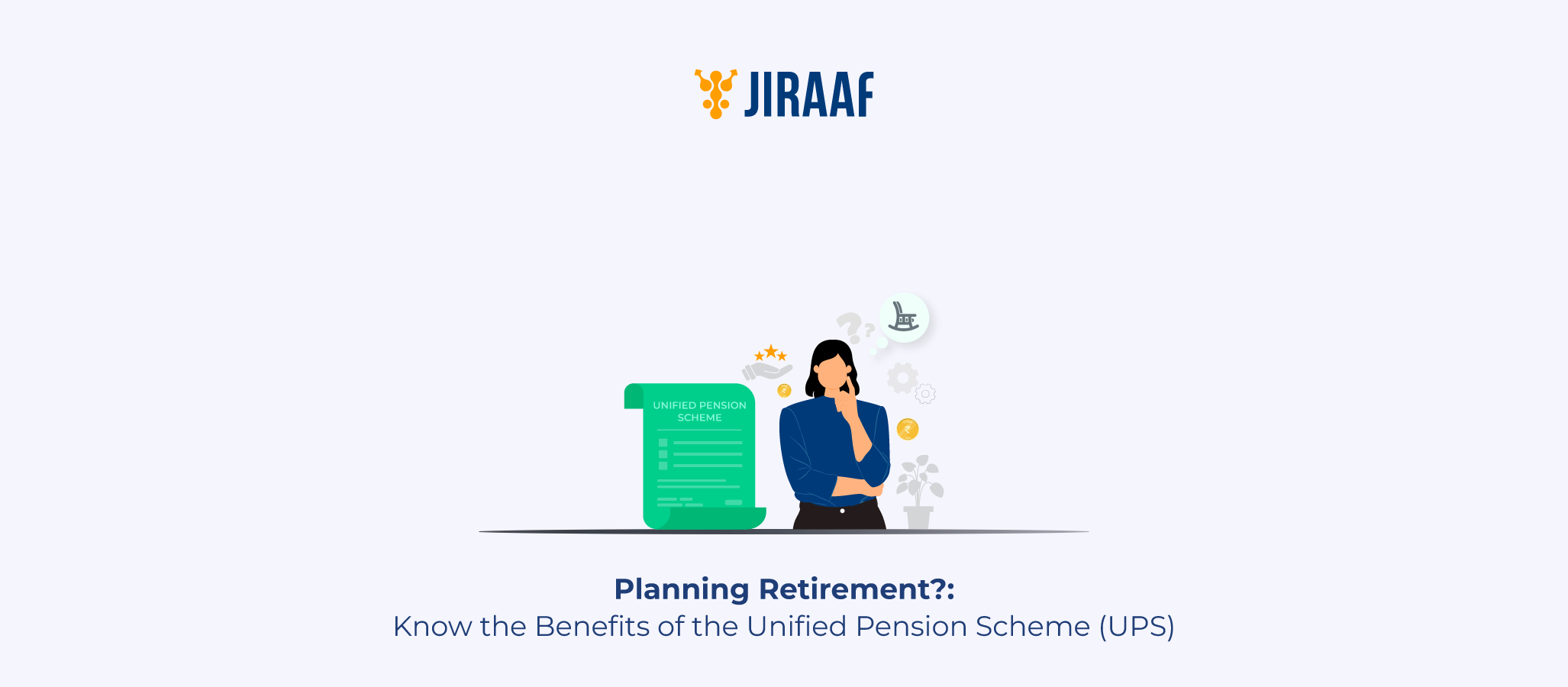Retirement planning in India often leans heavily on employer-led schemes and personal investments, which work for organized workers. But for nearly 80%-90% of India’s workforce in the unorganized sector, consistent retirement savings are still elusive.
Freelancers, gig workers, contractual employees, and self-employed professionals can’t access traditional schemes due to irregular income, lack of employment documentation, awareness issues, and other structural problems.
So, does that mean the unorganized sector has no options? Well, no.
That’s where the Atal Pension Yojana (APY) comes in. It is a government-backed initiative designed to bridge this gap while reinforcing financial inclusion at the grassroots level.
What is Atal Pension Yojana (APY)?
Atal Pension Yojana is a contributory pension scheme regulated by the Pension Fund Regulatory and Development Authority (PFRDA) of India. It is specifically tailored to the needs of the workers in the unorganized sector, like street vendors, laborers, and self-employed individuals, who lack access to formal retirement benefits like EPF. However, salaried individuals without statutory pension benefits can also enroll in this scheme.
What makes APY particularly appealing is its government backing and guarantee. Subscribers get an assured fixed monthly pension, currently ranging from ₹1,000 up to ₹5,000, starting at age 60, based on their contributions. This long-term savings approach promotes retirement readiness in a segment typically underserved by formal financial planning tools.
Note: Recently, the government has proposed increasing the minimum guaranteed pension under APY to double, from ₹5,000 to ₹10,000 per month. This aims to strengthen social security for the vulnerable and unorganized workforce, though the final approval and implementation details are awaited.
Benefits of Atal Pension Yojana
In the unclear world of unorganized workforces’ retirement plans, Atal Pension Yojana not only provides structure but also offers additional benefits.
Guaranteed Pension
One defining feature of APY is the guaranteed pension starting at age 60. You get a predefined pension amount based on your contribution and age at entry, helping you clearly plan out your retirement income. This makes APY a valuable tool for investors seeking stable, non-market-linked returns.
Pension Corpus for Nominee
APY ensures continuity and dignity in retirement benefits. If the subscriber dies after 60, their spouse can either continue receiving the pension or exit the scheme and claim the accumulated corpus at once. If both the subscriber and spouse are deceased, the nominee receives the corpus, making APY a viable legacy planning tool.
Tax Benefits under APY
Contributions to the Atal Pension Yojana qualify for tax deductions under Section 80CCD(1) of the Income Tax Act for up to ₹1.5 lakh annually, and an additional ₹50,000 under Section 80CCD(1B) when combined with the National Pension System (NPS). This makes APY an efficient scheme for tax planning, especially for self-employed professionals and informal sector workers.
Government Co-contribution
The central government provided a co-contribution of 50% of the subscriber’s annual contribution or ₹1,000 (whichever was lower) for the first five years—but only for those who joined between June 2015 and March 2016 and were not covered under any other statutory social security scheme. This window has since closed, but it helped establish APY as a cooperative retirement effort rather than a mere savings plan.
Eligibility Criteria for Atal Pension Yojana
Age and Contribution Period
- Age limit: 18 to 40 years
- Contribution period: minimum 20 years
The scheme promotes long-term savings. Let’s see that with an example. If you join at age 40, you’ll contribute for 20 years and start receiving the pension at 60. If you join at age 18, your contribution period extends to 42 years.
So, if you want to reduce your monthly contribution to reach your goal amount, the earlier you start, the better.
How to Open an Atal Pension Yojana Account
You can do this both online and offline, easily.
Online Application Process
You can open an APY account through most major banks’ net banking portals or mobile apps. The process is fully digital, including the option to close your account. This can help you manage your account end-to-end without paperwork. This digital lifecycle management enhances convenience and accountability for tech-savvy investors.
Offline Application Process
If you prefer traditional methods, you can visit any participating bank branch with a completed APY registration form and KYC documents. The bank links the APY account to your Aadhaar-linked savings bank account and sets up the monthly auto-debit based on your pension choice.
Required Documents for APY
- Aadhaar card (mandatory for KYC and linking your bank account)
- Age proof (birth certificate, school certificate, or Aadhaar)
- Valid mobile number linked to Aadhaar
- Savings bank account details
Ensuring these documents are accurate and ready will prevent future issues with account continuity or processing your benefits.
Atal Pension Yojana Contribution Chart
Monthly Contribution Based on Pension Choice
Below is the Atal Pension Yojana chart showing monthly contributions for different entry ages and pension slabs.

Now you can easily assess the affordability and commitment levels for different pension slabs and entry ages.
Auto-debit Facility
All APY contributions are automatically debited from your linked bank account, ensuring discipline and reducing the risk of any missed payments. This facility is critical for long-term retirement planning without requiring active intervention.
Exit and Withdrawal Rules for APY
Voluntary Exit Before 60
Early exit from APY is permitted only under exceptional circumstances such as terminal illness or death. Otherwise, subscribers who exit before 60 forfeit the guaranteed pension and receive only their contributions and accrued interest. This rigidity is an important consideration for you if you prioritize liquidity.
Death Before 60
If the subscriber dies before turning 60, their spouse can contribute until maturity or claim the corpus. This ensures continued pension planning and financial protection for the family, without burdening them with a mandatory monthly contribution.
Conclusion
As an experienced investor, you recognize the importance of stable, guaranteed income streams within a diversified retirement portfolio. The Atal Pension Yojana, with its government guarantee, low entry barrier, and defined benefit structure, provides a unique layer of certainty that market-linked products cannot offer.
APY is not designed to compete with equity or mutual fund-based retirement plans but to complement them. It offers everyone, from informal sector workers to gig economy participants, a dignified path to retirement security. Moreover, it allows you to integrate social impact with wealth creation.
You can introduce this scheme to your househelp, freelancer friends, or regular paani poori wala, and even use it to reinvest some returns and top up an existing plan.
FAQs About Atal Pension Yojana (APY)
How many Atal Pension Yojana accounts can a subscriber open?
You can open only one Atal Pension Yojana account. The scheme permits a single account per individual, linked to your Aadhaar and bank account. Multiple enrollments are not allowed. If you attempt to register again, the application will be rejected. Ensure your existing account remains active by maintaining a sufficient balance for monthly contributions and keeping your contact and nominee details updated.
What are the benefits of the Atal Pension Yojana?
Atal Pension Yojana offers you a fixed monthly pension after 60, guaranteed by the government. You also enjoy tax benefits under Section 80CCD(1B), automatic contributions via auto-debit, and the option for your spouse to receive the pension or the whole corpus upon your death. For eligible early joiners, the government co-contributes for five years. The scheme provides low-risk retirement planning, especially useful for non-salaried individuals.
What is the process to open an Atal Pension Yojana account?
You can open your Atal Pension Yojana account either online or offline. Log in to your bank’s net banking or mobile app online and follow the APY registration prompts. Offline, visit your bank branch, fill out the APY form, and submit required documents like Aadhaar and a passport-size photo. Ensure your savings account supports auto-debit to enable smooth monthly contributions without manual intervention.
For how many years will we get a pension from APY?
You receive the Atal Pension Yojana pension for your entire lifetime starting from age 60. After your death, your spouse can either continue receiving the same pension or opt to withdraw the accumulated corpus. Once both you and your spouse pass away, the nominee receives the corpus amount. This ensures lifelong income security with a structured post-retirement support system for your family.
Who can open Atal Pension Yojana?
Any Indian citizen aged between 18 and 40 can open an Atal Pension Yojana account, provided they have a valid savings account and Aadhaar number. You must commit to monthly contributions until turning 60. The scheme is especially designed for workers in the unorganized sector, but any eligible individual—including professionals without formal retirement benefits—can subscribe to build a predictable pension stream.
Discover fixed income investments with Jiraaf, a SEBI registered online bonds platform that educates and brings access to a wide array of bonds. Sign up today to explore diversified fixed income investment opportunities to support your goal-based wealth creation journey. Start investing!









